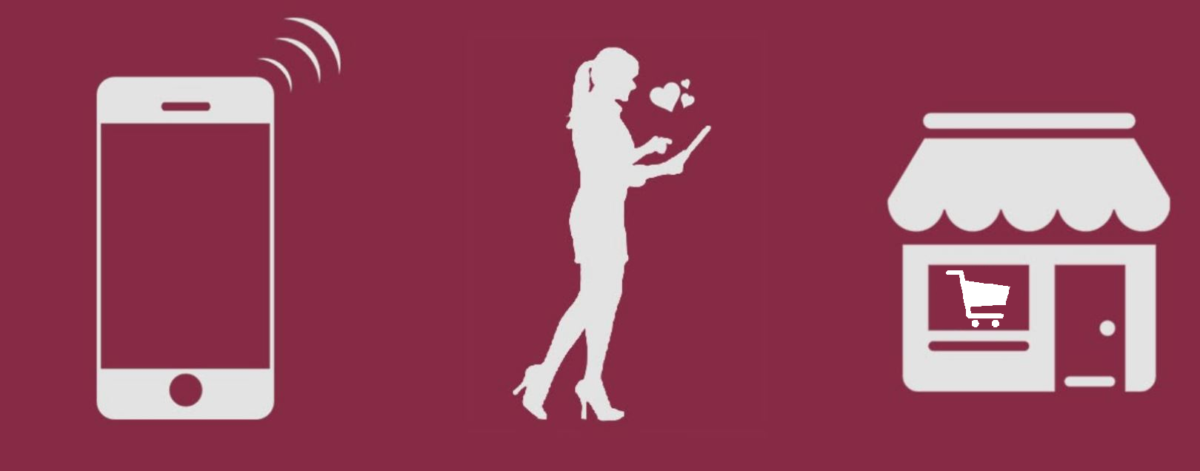Since the dawn of the digital age, futurists have predicted the demise of brick and mortar stores. Experts anticipated a shift to online shopping, with physical stores becoming obsolete next to the 24/7 availability of the online store. Why would consumers waste their time going to a store, when they can get everything they need from the comfort of their own home?
E-commerce has exploded in the last decade (with companies like Amazon becoming behemoths in the retail space), yet consumers still visit physical stores en masse. The need to touch and feel in a physical retail experience is not going away. According to a 2015 report published by TimeTrade, 85% of consumers prefer to shop in-store as opposed to online. While shoppers like the ease and convenience of online retailers, it is clear that they still like to go shopping in the traditional way.
The need for physical locations means that retailers have to craft marketing strategies that generate opportunities to reach these shoppers. As a result shopper marketing has become a rapidly-growing space in recent years, supported by the wide availability of digital resources that are now at the disposal of almost every consumer.
There are several different ways that companies can approach a shopper marketing campaign. Based on the demographic being targeted, organizations must choose which channels to use and which tactics to employ for each of those channels. The success of a shopper marketing campaign should be measured by sales lift, in comparison to the same period of time the previous year (there are other Key Performance Indicators to consider, but sales lift should always be reported). Recently, Qoints published a research study in this area which shows, among other things, that campaign tactics play a prominent role in dictating the sales lift for a shopper marketing campaign.
Our Shopper Marketing Benchmarks

The first step we took was to sort the campaigns we had by sales lift – we separated the results into the top third, middle third, and bottom third. There was a noticeable difference between the average sales lift between each third. Campaigns in the top third had an average sales lift of 55%, the middle third had an average sales lift of 20%, and the bottom third had an average sales lift of 8.3%.
Looking at the above graph, we can see the breakdown of the different tactics used in the top third, middle third, and bottom third. One thing that jumps out is that the top third relied heavily on personalized display ads, with 56% of campaigns utilizing this tactic. In comparison, the bottom third of campaigns were more likely to employ the use of coupons (45% of campaigns in the bottom third used a coupon in some capacity).

Personalized Display Ads
Looking at the above graph, personalized display ads generated the highest average sales lift for a company in our study. The average sales lift for a campaign that employed personalized display ads was approximately 49%, which well outpaced the other tactics. Why was this tactic so effective at reaching and engaging the consumer compared to the others? Personalization, executed appropriately for the demographic being targeted, simply offers a deeper connection with consumers than any of the other tactics that were utilized.
Sweepstakes
Sweepstakes generated a fair sales lift, with an average of approximately 33%, but were often hit or miss for brands. This tactic was found an almost equal amount of times in high performing campaigns and low performing campaigns, which contributed to the modest performance of the tactic across the study. When done properly, sweepstakes can pay dividends, but the floor is also very low (meaning that when executed poorly, they fail spectacularly).
Coupons
Coupons were the lowest performing campaign tactic in the study, only providing an average of an 18.8% sales lift. If this feels counterintuitive to you, you’re not alone – coupons have been a popular traditional tactic for brands and retailers for many years. In the digital age, however, coupons have become increasingly ineffective.While coupons still have a place in certain industries, brands must present a compelling case for consumers to use and redeem coupons or they will be stuck with a below average sales lift.
While sweepstakes, coupons, and personalized display ads accounted for the majority of campaign tactics utilized in shopper marketing campaigns analyzed, others were used. Both regular display ads and post/content tactics were used, resulting in unremarkable (below average) results. This is another indicator of the shift towards mass personalization, as the same tactic without personalization (regular display ads) was shown to drive minimal sales lift compared to the use of personalized display ads.
[READ MORE: CPG DIGITAL SHOPPER MARKETING PROMOTIONAL LANDSCAPE 2016]
With shopper marketing becoming a bigger focus for large brands, it is important for marketers to be able to stay on top of the current best practices within the space to ensure they are maximizing sales lift. Studies such as the one carried out by Qoints can help update the collective consciousness of digital marketers, but having access to real-time data that shows which campaign tactics are working best in the current shopper environment is essential for the cutting edge brand marketer. Contact us today to find out how using Qoints can help integrate data into your strategy, execution and evaluation processes for digital shopper marketing campaigns.

